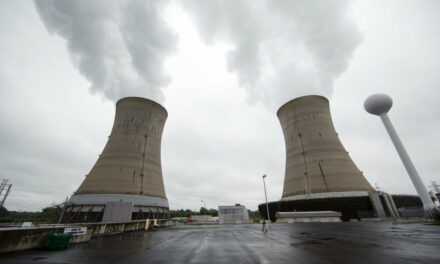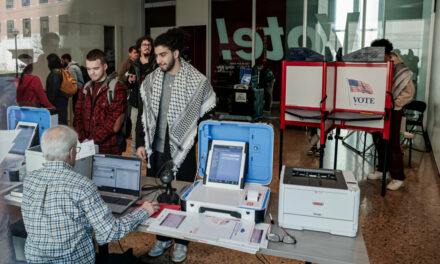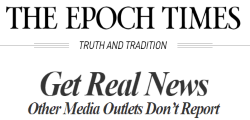We support our Publishers and Content Creators. You can view this story on their website by CLICKING HERE.
While returns in Georgia, Wisconsin, and Michigan are inconclusive, those in Arizona, North Carolina, Pennsylvania, and Nevada are trending the GOP’s way.
Republican voters appear to be running up big leads during the opening stages of early voting in at least four of seven battleground states, in some cases not only chipping into mail-in ballot advantages that Democrats have built over the past few election cycles but surpassing them.
By Oct. 24, early votes and mail-in ballots had topped more than 1 million each in California, Florida, Ohio, Virginia, Tennessee, and Texas, as well as battleground states Georgia, Michigan, North Carolina, and Pennsylvania.
Across 25 of those 36 early voting states that register voters by party affiliation, 3.913 million had voted with 11 days remaining before the Nov. 5 election.
During the pandemic-skewered 2020 election—when two-thirds of voters cast early votes or mailed in their ballots—across 10 states that the University of Florida’s Election Lab surveyed on Oct. 25 nine days before that Nov. 3 Election Day, Republicans’ early voting advantage was far narrower.
Of 5.8 million Americans who had cast early ballots in the 2020 election by then, Republicans had a 2.234 million to 2.177 million advantage over Democrats.
While Republicans appear to have a larger 2024 early voting lead than they did in 2020, Democrats’ usual mail-in voting advantage is not as stout.
Democrats had a near two-to-one advantage in those 18 states, 10.989 million to 5.146 million at this time in 2020.
Democrats had a 5.167 million to 3.754 million lead over Republicans in these 25 states, with nearly 2.215 million returned by nonpartisan voters as of 10 a.m.
Returns from six of the seven battleground states among the 36 of 47 that offer early voting appear to confirm Election Lab’s numbers.
In Arizona, where early voting began on Oct. 8 but the Secretary of State’s Office had not released in-person early voting results as of Oct. 24, more than 916,680 mail-in ballots of nearly 3.347 million requested had been returned.
According to Election Lab, Republicans had mailed in 382,924 of those votes, nearly 42 percent, while Democrats had returned 329,228, less than 36 percent.
More than 204,000 were from nonpartisan voters.
Director of the Board of Elections Tyler Burns holds a test ballot during a mail-in ballot processing demonstration at the Board of Elections office in Doylestown, Pa., on Sept. 30, 2024. Hannah Beier/Getty Images
Battleground Breakaways
In North Carolina, which also set a first-day early voting record with 353,000 casting ballots on Oct. 17, more than 1.887 million had voted in person, according to the North Carolina State Election Board on Oct. 25.
There was no available breakdown of the 120,000 mail-in ballots that had been returned.
Republicans had mailed in nearly 378,000 votes, nearly 30 percent, and nonpartisans 126,766 ballots, 10 percent. Republicans’ mail-in tally in 2020 was 23 percent, according to Election Lab, so the near-30 percent is, potentially, significant.
More than 401,000 of 816,479 requested mail-in ballots have been returned.
While Georgia, Wisconsin, and Michigan early voting trends are inconclusive, and those in Arizona, North Carolina, and Pennsylvania appear to favor Republicans, nowhere among the seven battleground states is the GOP enjoying a better pre-Election Day turnout than in Nevada.
Democrats had an 81,222 to 57,658 lead in mail-in ballots, with 232,156 of 1.975 million requested returned.
All Nevada voters automatically receive ballots in the mail unless they opt out, and the state offers same-day registration on Election Day.

 Conservative
Conservative  Search
Search Trending
Trending Current News
Current News 







